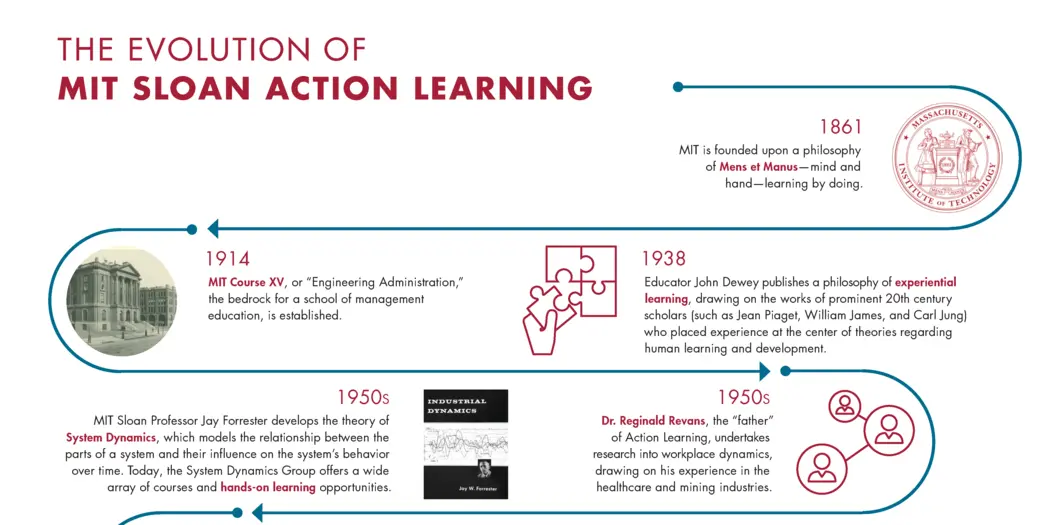Action Learning
The History of Action Learning
MIT has always underscored the symbiotic relationship between thinking and doing. The link between theory and practice—mind and hand—is at the core of the Institute's educational philosophy and at the root of MIT Sloan's groundbreaking work in Action Learning. The 1964 Application and Implementation of the Industrial Dynamics class—where students applied system dynamics to real-world industrial problems—is a classic example of the school's early integration of Action Learning into the curriculum.
In 1996, the center now known as the Martin Trust Center for MIT Entrepreneurship was established. Soon thereafter, the center began to offer a class called Entrepreneurship Lab (E-Lab)—a model for future Action Learning labs. In 2000, Professors Simon Johnson and Rick Locke were teaching a course called "Entrepreneurship without Borders" focusing on entrepreneurs in diverse global settings. Their students were familiar with E-Lab and asked the professors if they would be willing to create a global version of that course. As Johnson recalls, "It was a sensible request. We thought when it first came that it was a daunting request and one we wouldn't be able to meet." Working with former students and colleagues, as well as Endeavor, a nonprofit that supports entrepreneurs in emerging countries, the professors assembled several projects for students to work on with host companies, and Global Entrepreneurship (G-Lab) was born.
Today, MIT Sloan’s Action Learning portfolio includes labs addressing a wide range of subjects—America’s cultural and economic divides, blockchain technology, global economics, investment management, operations, product management, sustainability, and more.
Credit: Bridget Stone

